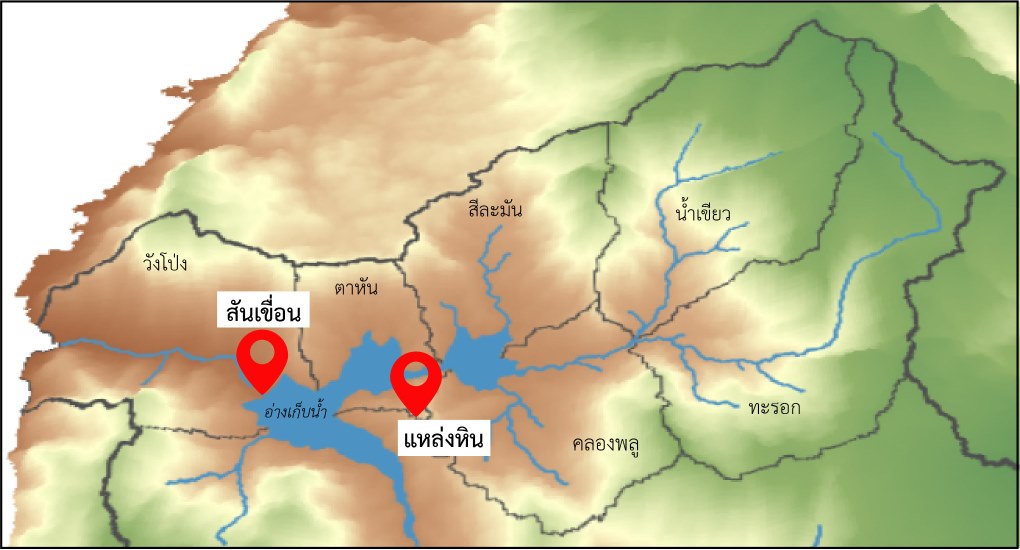Besides being one of the main headwaters of Chanthaburi river, North Ta-riu sub-tributary, Khao Soi Dao wildlife sanctuary has been the habitat of many endangered mammals with the efforts of community-based conservation by local people for more than a decade. However, these ecosystem services will be destroyed if the Khlong Ta Liu Dam project of the Royal Irrigation Department was successfully re-proposed to construct in this area.
Developing the evaluation system on the impact of distance from villages on mammal status and distribution using camera trap in the target area for conservation expansion at Ta-riu watershed, Khao Soi Dao wildlife sanctuary: an approach for conservation p
The community-based conservation on an endangered Pileated Gibbon at Nam-kheaw and Tarok watershed of the North Ta-riu sub-tributary, Khao Soi Dao wildlife sanctuary, Chanthaburi province was successfully conducted from 2009 to 2012. By changing the behavior of the local Non-Timber Forest Products (NTFPs) collectors who used to hunt Pileated Gibbons as food during NTFPs collection to conserve them, Pileated Gibbons turned to re-colonize in the area that they used to be hunted down. Based on this success, researcher decided to expand the community-based conservation to the nearby watersheds which were Wang-pong, Ta-hun, Silaman and Klong-plu watershed. However, since there have been a few Pileated Gibbons distributed in these watersheds, using Pileated Gibbon as flagship species as used to do in the past may not suitable. Thus, alternative mammals should be used instead which led to the survey on their status and distribution in these watersheds. By setting up 5 camera traps from forest edge to forest interior for 376 days, 15 mammals species were found which were Wild Boar, Sambar, Northern Pig-tailed Macaque, Gaur, Northern Red Muntjac, Greater Hog Badger, Malayan Porcupine, Asian Elephant, Asiatic Black Bear, Common Palm Civet, Leopard Cat, Sun Bear, Dhole, Crab-eating Mongoose and Clouded Leopard. Sambar, Northern Red Muntjac, Gaur and Asian Elephant were usually found at the forest edge while Wild Boar, Greater Hog Badger and Northern Pig-tailed Macaque were usually found at the forest interior. The area with highest species richness of mammals was the area in the middle between forest edge and forest interior which is Ta-hun watershed. Thus, this watershed should be prioritized for conservation. Although Pileated Gibbon has usually been found at Nam-kheaw watershed which is at the forest interior, lowest species richness of mammals was found in this area. With high probability of detection at the forest edge and their iconic characters, Sambar and Gaur can be the flagship species for expanding the community-based conservation while Clouded Leopard and Dhole which are the top predator in many food chains can be the umbrella species for conservation. However, if the Khlong Ta Liu Dam project of the Royal Irrigation Department was successfully re-proposed to construct in this area, most habitats in this study will be destroyed and more than a decade of the community-based conservation effort in this area will be done for nothing.
1. Ta-riu wild elephant guarding team
2. Khao Soi Dao wildlife sanctuary, Department of National Parks, Wildlife and Plant Conservation




